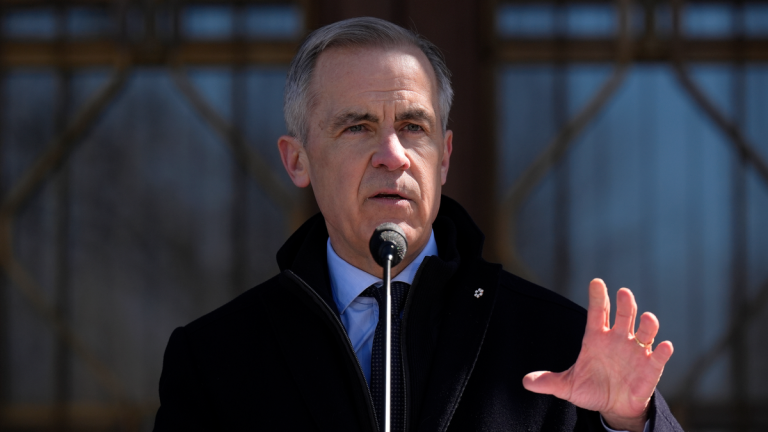🎧 Listen to This Article
As Canada heads into its 2025 federal election, Prime Minister Mark Carney is positioning himself as the leader capable of guiding the nation through a post-pandemic economic recovery. His newly announced campaign platform, which includes tax cuts, infrastructure investments, and increased defense spending, provides a direct challenge to both his predecessor Justin Trudeau and the growing influence of U.S. economic policies.
Context and Vision: Carney’s Economic Agenda
Carney’s platform emphasizes a dual approach: reduce government waste while simultaneously stimulating strategic investments in sectors like defense and infrastructure. The former Governor of the Bank of Canada and the Bank of England brings decades of crisis management experience, and he has frequently positioned himself as uniquely qualified to navigate Canada through turbulent geopolitical and economic landscapes.
At the core of Carney’s plan is his promise to scale back wasteful government spending. The proposed tax cuts—intended to foster a more competitive economic environment—are paired with a long-term vision to reduce Canada’s fiscal deficit. Carney aims to bring the deficit down to 1.35% of GDP by 2028-29, a far more aggressive target than the 1.6% forecasted under Trudeau’s government.
The Tax Cuts: A Shift Toward Leaner Government
The proposed tax cuts are designed to be both stimulative and responsible, emphasizing lower corporate tax rates and increased incentives for small businesses and entrepreneurs. While specific details remain under wraps, the approach is aimed at fostering innovation and ensuring that Canada’s tax structure remains competitive globally, especially as other nations, including the U.S., increasingly leverage tax reform to attract business.
This strategy may appeal to businesses and investors seeking a more stable tax environment. However, it also raises critical questions about whether the tax cuts will adequately address Canada’s existing public service needs, particularly with regards to social programs, infrastructure projects, and defense.
Defense Spending: Strengthening National Security
Another pillar of Carney’s platform is a commitment to increase defense spending to exceed NATO’s target of 2% of GDP. This bold move is likely to resonate with Canadian voters concerned about the growing instability in global politics, especially in light of Russia’s actions in Eastern Europe and U.S. foreign policy shifts.
By investing in defense, Carney aims to bolster Canada’s strategic role on the global stage, particularly in transatlantic security partnerships with NATO allies. This will likely have far-reaching implications for Canada’s defense industry and could spur greater innovation and collaboration in military technology. Additionally, it positions Canada as a more reliable and active partner in international security matters.
Addressing the Deficit: Carney’s Fiscal Discipline
Carney’s emphasis on reducing the deficit to 1.35% of GDP by 2028-29 is an ambitious goal that suggests a dramatic shift in fiscal policy. His plan to cap government spending growth at 2% annually—down from the previous 9%—indicates a major recalibration of government priorities. This would be achieved without reducing transfers to provinces, territories, or individuals, which could be a tough sell politically but may provide a more sustainable fiscal outlook for the country in the long run.
However, the real test for Carney’s fiscal strategy will lie in its execution. His government would need to make difficult decisions to control spending while still meeting the pressing needs of a growing and aging population. For example, infrastructure investment will require substantial resources, but without cutting social transfers, the government’s ability to fund such projects might be limited.
Long-Term Implications: A Reshaped Canadian Economy?
Carney’s economic platform could mark a pivotal shift in Canada’s fiscal future, but its success will depend largely on execution. If successful, these policies could create a more competitive, efficient economy—one that is less reliant on the U.S. and better positioned to address both domestic needs and international challenges.
However, there are significant risks. The proposed tax cuts could reduce revenues in the short term, potentially impacting funding for crucial public services. Meanwhile, the increased defense spending might be difficult to balance with Carney’s promise of fiscal prudence, especially if global security tensions do not warrant such an aggressive investment.
Policy Recommendations for Businesses and Tax Experts
- Monitor Tax Reform: Businesses should start preparing for potential tax changes, especially those that could provide relief in the form of lower corporate taxes and more favorable incentives for entrepreneurship.
- Prepare for Spending Shifts: If Carney’s platform succeeds, businesses in defense, infrastructure, and technology sectors should position themselves to take advantage of new government spending. These sectors could see substantial growth in the coming years.
- Advise on Long-Term Financial Planning: Tax experts should help clients prepare for potential fiscal shifts, advising on tax-efficient investment strategies and preparing for potential tax hikes or changes to capital gains taxes if Carney’s plan leads to an overhaul of the tax structure.
- Evaluate Risk Exposure in Defense Contracts: For firms involved in defense contracting or technology, the proposed increase in defense spending presents both opportunities and risks. These businesses should be proactive in securing government contracts and exploring how increased spending might affect the supply chain and procurement processes.
Conclusion
Mark Carney’s proposed platform brings a fresh economic outlook for Canada, emphasizing fiscal discipline, strategic investment in defense, and tax relief. While it could potentially lead Canada towards greater economic resilience, the success of these policies will depend heavily on the implementation and balance between fiscal restraint and targeted investments. As businesses and tax experts analyze the proposal, the focus should be on preparing for potential changes to tax policy and ensuring that both short-term and long-term strategies are aligned with these shifts.
For further details, clarification, contributions, or any concerns regarding this article, please contact us at editorial@tax.news. We value your feedback and are committed to providing accurate and timely information. Please note that our privacy policy will handle all inquiries



